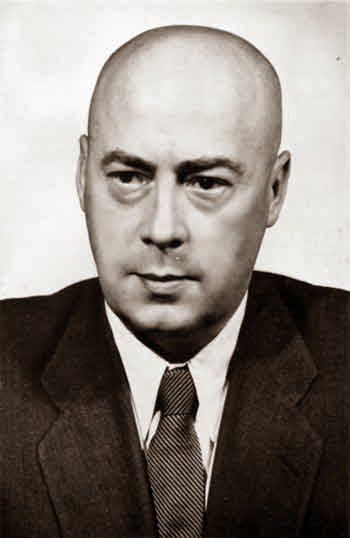Józef Cyrankiewicz (1911 – 1989) (pronounced Ser-en-KAY-vich) attended Jagiellonian University in Krakow and became secretary of the Polish Socialist Party in 1935. He was active in the Polish resistance organization from 1939 in Krakow until he was captured by the Gestapo in 1941 and sent to Montelupich Prison. In September 1942 he was sent to Auschwitz where he became Prisoner No. 63,933*.
While at Auschwitz he was one of the leaders of the Polish underground. He reached out to other socialists and other international groups to try and get prisoners from different international groups to work together. Together, the underground worked to get messages to the outside about what was happening in the camp, and to save who they could.
When the Germans transferred most of the Poles out of Auschwitz (in 1943) Cyrankiewicz was transferred to Mauthausen, one of the worst camps. There he was liberated by the US Army, after serving four years as a prisoner of the Nazis. After the war he pursued (communist) politics full-time. He became Secretary-general of the Polish Socialist Party’s central executive committee in 1946, and in 1947 became the first Premier of Poland after the war (the equivalent of our president of the United States.) Cyrankiewicz served as Premier of Poland from 1947 – 1952, and again from 1954 – 1970. Always a leader in the communist party, he passed away in 1989 just a few months before the end of communism.
If his story sounds familiar to Henry’s – nearly the same age, Krakow, Montelupich Prison, Auschwitz, underground, their paths crossed multiple times. They were both, as Henry called it, fellow ‘Auschwitzers.’ In post-war Poland, ‘Auschwitzers’ who survived were greatly respected.
When I visited the Auschwitz-Birkenau State Museum, Cyrankiewicz was one of the prisoners I inquired about. Both our tour guide and the archivist looked at me with raised eyebrows as if to say ‘How on earth would a normal American know about a Polish president interred at Auschwitz?’ They were somewhat surprised when I explained “Henry told me about him several times. You see, he sat next to him when he peeled potatoes. They became acquainted and reconnected after the war as well.”
They told me his prisoner number was 63,933; Wikipedia states 62,933, so I don’t know if I was dyslexic in my note taking or Wikipedia is wrong. There’s very little information on him that isn’t in Polish, so my research is limited. I even purchased from the museum a five-volume scholastic work that documents every prisoner – but there are gaps in prisoner numbers due to missing records; and his number falls in one of those gaps. I did ask the museum if there was a prisoner photo – the museum said there were five photos of him at one point (if I read my notes correctly); there are no photos now. It could be political convenience or simply that of the 100,000+ prisoners photographed, only 40,000 photos remained undestroyed by the Germans.
As I’m about to embark on the next chapter in Henry’s life, namely communism, remember he peeled potatoes in the kitchen of Auschwitz next to Cyrankiewicz. And when you sit and peel potatoes – what do you do? You talk.
Sources: Wikipedia, Metapedia, Encyclopedia Britanica online. Photo downloaded from Wikipedia Commons, which states the photo is in the public domain as it was an official government photograph.

